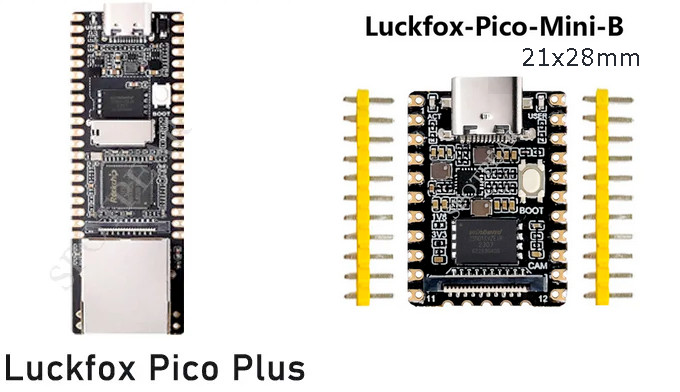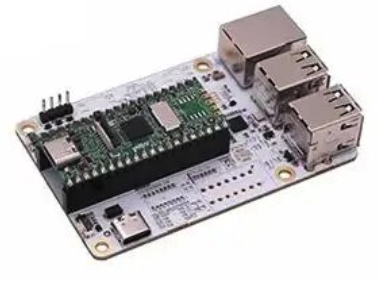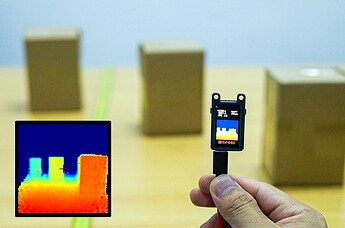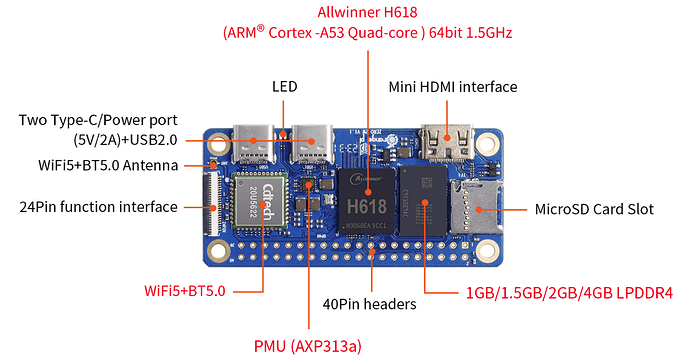I have a small depth camera I plan to use for a palm gesture interface sort of theremin like with hopefully more nuance, I might end up using an ESP32-S3 to do a simple blob geometry scan.
There are some interesting new tiny Chinese Linus boards with Ghz clock speeds that might serve me better, (they might make a good synth engine to upgrade an old keyboard’s sounds.)
I’m mentioning it now after a survey of what’s available during the 11/11 - 11/17 Aliexpress sale, saving some 20% on a purchase. (I mention some prices that include the shipping charge, items marked with " $4 off every $20" qualify for the extra discount)
Looking at some new Chinese made tiny Linux boards geared for embedded video AI, that might suit my odd idea…
Luckfox-Pico Based on one 1.2 Ghz Rockchip RV1103/06 using an ARM Cortex-A7 + RiscV

www.aliexpress.us/item/3256805897424636.html
Decent Guide
Offers 6 variations from $9 to $15 with 64Mb or 128Mb ram, 1Gb Flash
Milk-V Duo Milk-V Duo | Extremely Cost-Effective Ultra-Compact Embedded Linux Development Platforms
Dual Core 1Ghz CV1800B RISC-V, 64 Mb, 16 bit audio can be found for $8.20
$15.26 with optional Eithernet connector
www.aliexpress.us/item/3256805977614076.html
There’s an expansion board that doesn coast much more than the lone Eithernet connector option.

These boards have more horsepower than some of older Allwinner boards I have seen before.
The Luckfox-Pico documentation looks good, although the pages of Linux configuration steps are beyond me (I need to burn an image and plug it in like a Raspberry Pi)
Looking for something with stronger support and community, I ended up considering the:
Orange Pi Zero 2W
http://www.orangepi.org/html/hardWare/computerAndMicrocontrollers/details/Orange-Pi-Zero-2W.html
Based on the RaspberryPi version it offers 1, 1.5, 3 & 4 Gig Ram options and has a 24 pin expansion connector that might be suitable for project specific circuit PCB connections.
They offer multiple systems (not as fresh as RaspberryPi’s),
Android 12 TV, Debian11, Debian12, Ubuntu22.04, Ubuntu20.04 ,Orange Pi OS(Arch), it might work with OpenWrt (There are some 9 earlier ORange Pi models listed) which I believe is the mini Linux used in WiFi Routers, one might be able to piece together a minimal system that runs well from flash (that seems ideal for the tiny boards).
After considerable research I found one can get a 1 GB for $14 total cost, for development a 2 Gig with Expansion board can be had for $28.83 (with the $4 discount until 11/17)
www.aliexpress.us/item/3256805947124210.html
The factory ‘store’ is just a couple dollars more with out the 11/11 special.
Any comment on the Orange Pi wound be appreciated…



